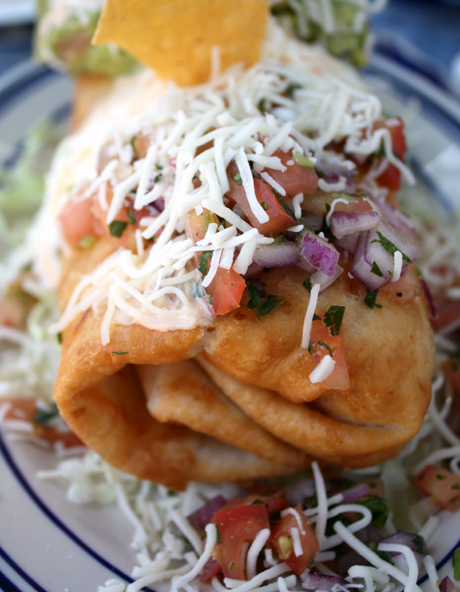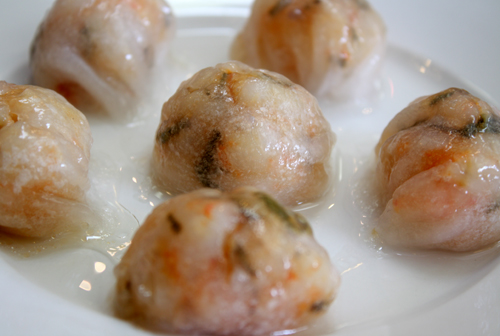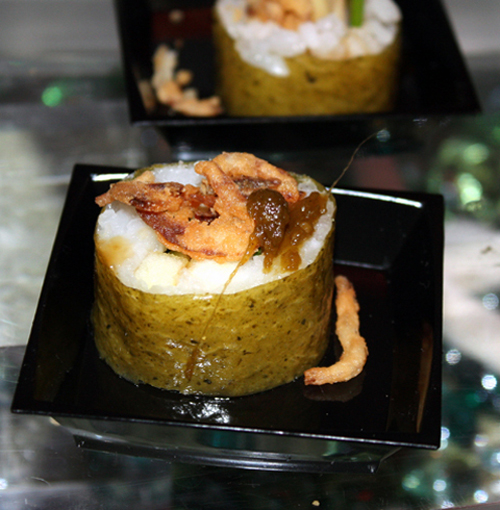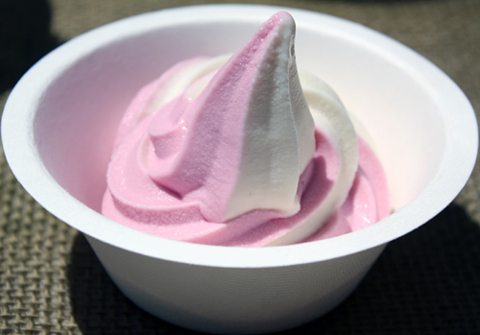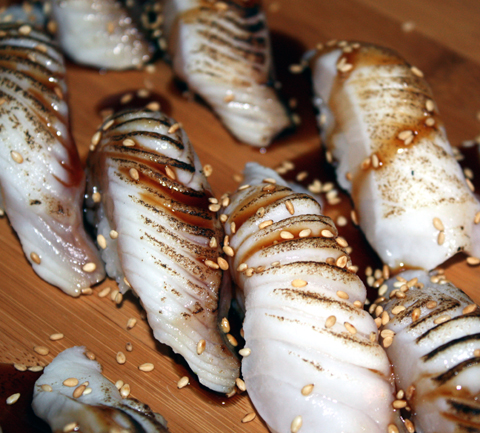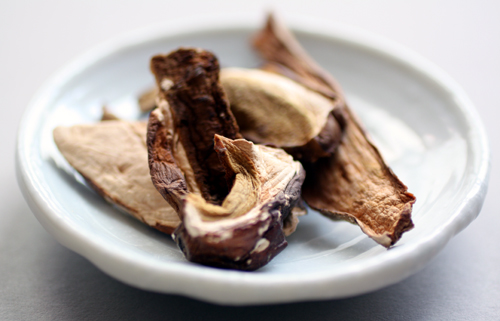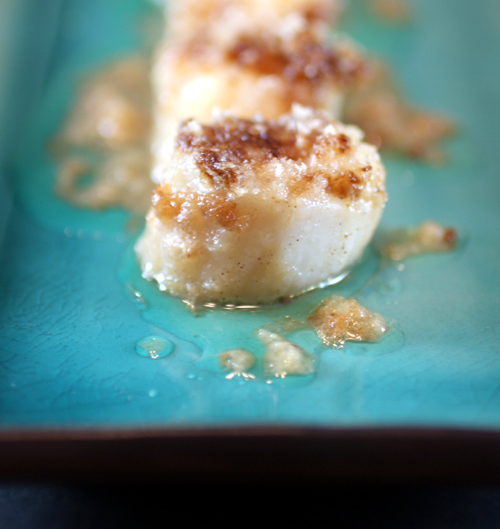Embracing High Heat, Part I (The Savory)
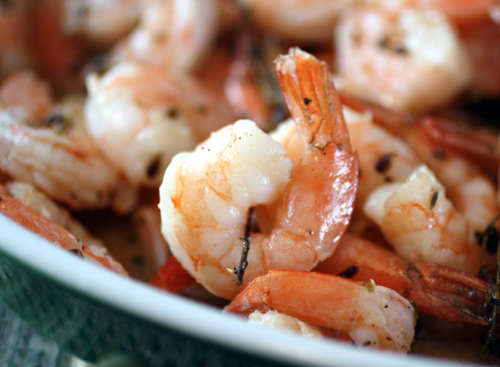
I dunno about you, but in my early days of cooking, I was petrified of high heat.
Back then when I was a teen, the words, “Heat the pan on high,” would make me quake in fear.
I thought I’d end up burning myself, not to mention whatever I was cooking, along with the poor pan, too.
But the more you cook, the more you realize the beauty of high-heat cooking. There’s nothing like it for creating caramelization, and thus, greater flavor, texture, and color.
Who doesn’t love the blistered crust of pizza baked in a scorching wood-oven? Or the yummy crust on a seared steak? Or the crispy skin on a salmon fillet? Or the smoky, intense flavor vegetables get from being tossed around in a fiery wok?
When I took a recent class at Draeger’s in San Mateo, veteran cookbook authors Bruce Weinstein and Mark Scarbrough reminded me of the joy of high-heat cooking, when they demonstrated their recipe for “Roasted Shrimp.” It’s from their newest cookbook, “Cooking Know-How” (Wiley).
Normally, I just saute shrimp in a pan. But their oven-method could not be easier. It’s my new favorite way to cook shrimp.
Like all the recipes in this book, the shrimp one gives you a basic technique, then variations so you can alter the flavorings.
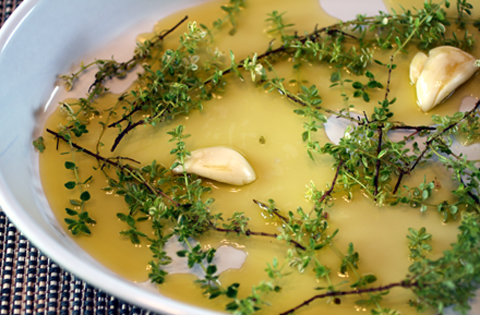
The method remains the same: You put a baking dish in a cold oven with oil and herbs. Turn the oven on to 450 degrees. As it warms, the herbs get infused gently into the oil. When the oven gets up to temperature in 15 to 20 minutes, add shrimp (or scallops) to the pan. Cook for about 10 minutes for large shrimp (about 5 minutes for scallops), stirring a couple of times during the cooking process.
Pull out the pan, then stir in salt, pepper, and a dash of acid (vinegar, citrus juice, or wine).
This is by far the juiciest shrimp you’ll ever eat, with a pleasing crunch, too. It’s the high heat that does all that. Moreover, the fragrance of the herbs roasting in the oven is utterly intoxicating.

